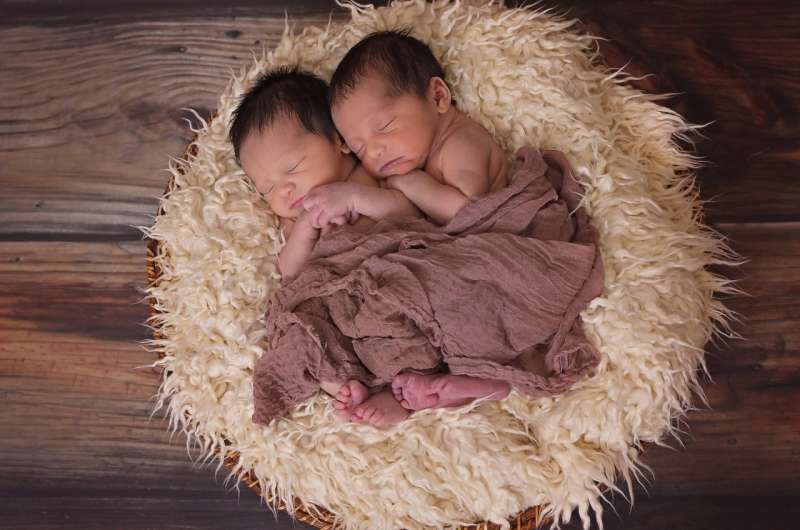Older women more likely to conceive twins due to evolution

Women are more likely to conceive fraternal twins once they reach their 30s as a result of an evolutionary response to combat declining embryo viability, according to a new international collaboration involving researchers at The University of Western Australia.
While it is already well known that women are more likely to conceive twins during the middle of their reproductive life, the research findings, published today in Nature Ecology and Evolution, explain the evolutionary history behind this phenomenon.
Associate Professor Joseph Tomkins from UWA's School of Biological Sciences said the frequency of double ovulation, which is the release of two eggs during the same month of a menstrual cycle, had evolved to maintain female fertility.
"Our work suggests that the probability of releasing two eggs increases as women age due to an evolved response to the age-related decline in embryo viability," Associate Professor Tomkins said.
"Using simulated tests, we were able to show that in ancestral populations, evolution would favour a scenario whereby two eggs are released but only a single child is born, suggesting fraternal twin births are a by-product of selection for fertility, rather than a way to increase reproductive output."
Many countries have seen an increase in the frequency of fraternal twins in the past few decades as a result of assisted pregnancy techniques, improved nutrition and the delay of childbearing until later in life.
Associate Professor Tomkins and Honorary Research Fellow Robert Black from UWA, worked with researchers from DePauw University in the United States and from the London School of Hygiene and Tropical Medicine to conduct simulations using mathematical modeling.
In order to account for the rise and fall pattern of twin births with maternal age, the researchers found the majority of women were likely releasing two eggs during each cycle towards the end of their reproductive lives, however only a small fraction of conceptions resulted in the birth of twins.
"This research offers important insights into how our evolutionary past still influences our modern lives, with fraternal twinning rates increasing as women increasingly delay childbearing," Associate Professor Tomkins said.
More information: Wade N. Hazel et al. An age-dependent ovulatory strategy explains the evolution of dizygotic twinning in humans, Nature Ecology & Evolution (2020). DOI: 10.1038/s41559-020-1173-y
Journal information: Nature Ecology & Evolution
Provided by University of Western Australia



















